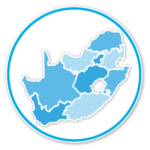SWPN Methodology
SWPN Services

Analysis
Participatory multi-stakeholder problem and options analysis to support better collaborative decisions across organisations and sectors where collaboration is needed.

Convening
An established and trusted platform that convenes public-private-civil society stakeholders required for collaborative projects – from government policy development, to institutional structures for collective action and interest negotiation in projects and knowledge sharing and stakeholder consultation. The platform allows organisations to project their corporate values on water management.

Project development
Incubation and testing (technical, financial and institutional) of water management project ideas that have a significant impact on future water demand and supply and are also pragmatic and cost effective options for collective public-private partnership action.

Project Scaling
Designing and managing the scaling process for water management projects concepts developed by the SWPN, its partners or key stakeholders.
SWPN Working groups
WPN focuses its efforts on the country’s “thirstiest” sectors: agriculture, manufacturing, energy, mining and residential and delivers solutions through four thematic working groups:
- Agricultural Supply Chain (ASC)
- Effluent and Wastewater Management and Sanitation (EWWMS)
- Water Use Efficiency and Leakage Reduction (WELR) and
- Water Stewardship (WS)
The thematic working groups are responsible for:
The TWGs provide an opportunity for the public and private sector and civil society to discuss (often controversial) water issues in a neutral space and to develop an understanding of each other’s perspectives and concerns.
The main function of the TWGs has been to assess the strategic needs of the thematic area, identify areas for collaboration, and to propose projects for SWPN funding.
Potential projects are identified within the TWGs and submitted to the Manco for approval. Once projects are selected and funded, TWGs also contribute to project conceptualization and oversight and provide a forum for dissemination of findings.
Projects identified through the TWGs provide an opportunity for collaboration to address issues of common concern and allow funders to leverage their financial input into projects in which they have a specific interest.
Projects are selected for development and implementation if they meet as a minimum the following criteria:
- Potential to close the supply-demand gap, projected to be 17 percent by 2030 according to a “business-as-usual” scenario
- Scalability. Defined as including results that are replicable, have policy implications or are catalytic in changing practices of partners and stakeholders
- Potential for collaborative action with the private sector
- Synergies with other SWPN and Partner projects and programmes in the geographical area. This is to promote and also prioritize projects that result in geographic crowding-in of interventions
- Sustainability of project beyond SWPN support

